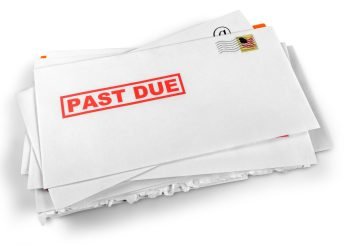First, you aren’t alone. In 2021, the IRS sent 2.4 million defaulted installment agreement notices.
You Defaulted on Your IRS
Payment Plan. Now, What?


Jim Buttonow, CPA CITP
Updated on: June 27, 2023
If you get one too, you have options to get back in good standing with the IRS and avoid enforced collection activity (like liens, levies, and passport restrictions).
What causes default?
The IRS defaults installment agreements for 4 reasons:
- You missed payments during the year. If you’re in a streamlined installment agreement, meaning you owe less than $50,000 and can pay within 72 months, you can miss 1 payment a year without default. For most other payment plans, 1 missed payment equals a default.
- You have a new unpaid tax balance. If you have a new tax bill from a tax return, or an audit or CP2000 notice and don’t pay the entire bill, including penalties and interest, you’ll default your payment plan.
- You don’t respond to the IRS. If the IRS asks you to send your updated financial information and you don’t send it, or send incomplete information, your installment agreement will default. This happens often in partial-pay installment agreements, when the IRS requests financial information to update the terms of the agreement. In partial-pay installment agreements, the taxpayer’s financial situation means they’re making lower payments, which will result in the taxpayer not paying their entire tax bill before the collection statute of limitations
- You didn’t adjust your payment. If you agreed to a modified payment amount with the IRS, but don’t pay it as agreed, you’ll default on your payment plan.
Tip: You can only have 1 collection agreement at a time. For example, if you have an IRS payment plan for 1 tax year and you file and owe on the next tax year, the IRS won’t give you another payment plan on the new tax bill.
What happens if you default
- If you default on your payment plan, the IRS will send you one of two notices: CP523 or Letter 2975. These notices don’t cancel your agreement, but they put you on notice that you have 30 days to act, or the IRS will end your agreement.
- Within 30 days, you can reinstate your installment agreement to avoid IRS levies, which the IRS can issue 90 days after sending you the CP523/Letter 2975. Keep in mind that the IRS can ask you for new financial information to reinstate your agreement.
You may have to supply financial information to get your plan reinstated
If you don’t qualify for automatic reinstatement, the IRS will want your financial information. Sometimes, you can give the IRS limited financial information (like employer and bank information) on the phone, if you meet the terms for a streamlined installment agreement.
If you don’t qualify for a streamlined agreement, or owe more than $50,000, the IRS will want more detailed financial information. You’ll probably need a payment plan based on your ability to pay, and the IRS will probably file a federal tax lien.
If you defaulted on your agreement because of a new tax bill from a tax return you recently filed, the IRS will also want you to increase your withholding and/or make estimated tax payments, so it doesn’t happen again.
You don’t want to pay the cost of doing nothing
If you don’t get back into good standing with the IRS in 90 days, the IRS may start enforced collection on your tax bill.
- You’ll probably get a lien, if you owe more than $10,000.
- The IRS may also levy your funds from your employer(s), financial institutions, and others.
- If you owe more than $55,000 (for tax year 2022), the IRS will probably start passport restriction notification to State Department.
For most people, it’s practical to get into a streamlined installment agreement. If you reassure the IRS that you won’t owe again and you agree to direct-debit payments, the IRS will often allow you to reinstate your agreement. The only cost is the reinstatement fee of $89.
This article has been reprinted from Jackson Hewitt Tax Services. Defaulted on IRS Payment Plan? Here’s What to Do – Jackson Hewitt
